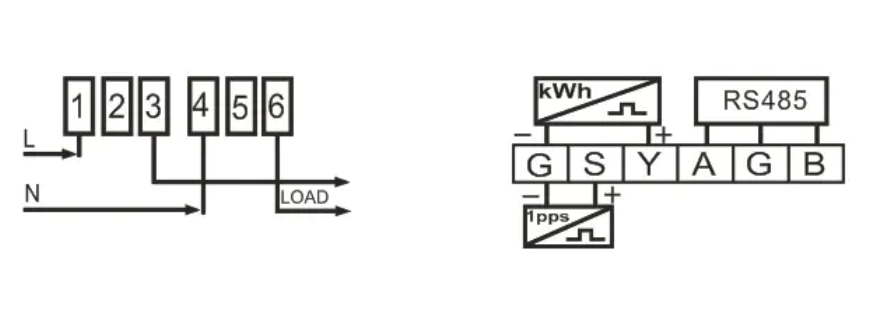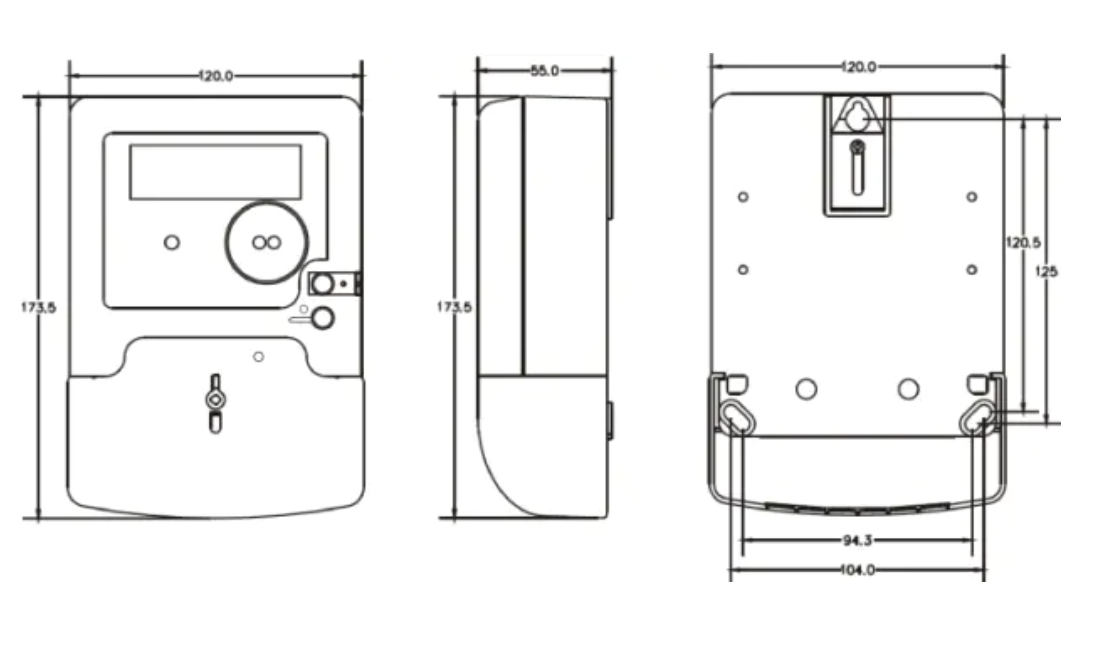| Brand | Wone |
| Model NO. | Single Phase Active Electronic Reactive Fcatory Electricity Meter |
| Rated voltage | 230V |
| Rated normal current | 5(60)A |
| Rated frequency | 50(Hz) |
| Methods of Communication | ZIGBEE |
| Series | D123031 |
Description
The meter cover and terminal cover are made of transparent PC materials, and the internal structure of the meter and the welding assembly process are all exposed to the user,which has higher requirements on the ability of the meter manufacturer. The meter case is designed with a programming key, which has a lead block. And the removal of the lead seal can press the programming button, which can set the parameters of the meter.
Features
Active and reactive energy measurement
Mounted mounting installation
Can up to 60A. RS485.
IR and ZIGBEE communication.
Multi-tariff function.
Meter has 3.6V Lithium battery, which is used to support multi-tariff function. And the precision of RTC is better than 0.5s/day.
LCD backlight allows the meter to be read in low light conditions.
With relay internal,which is used to remote control the meter connect and disconnect.
Terminal cover open detection.
With events records.
Over or Low voltage protection.
Electricity larceny prevention.
Reactive energy can be measured.
Degree of Protection: IP51 (indoor meter).
Specifications
| Main |
|
|---|---|
| Range | D123031 |
| Product or Componet Type | Energy meter |
| Country of origin | China |
| Complementary |
|
|---|---|
| Phase | Single Phase |
| Type of measurement | ---- |
| Metering type | Measurement |
| Device Application | Energy Charge |
| Accuracy class | Active power 1.0 |
| Rated Current | 5(60)A |
| Rated Voltage | 230V |
| Network Frequency | 50Hz |
| Technology Type | Electronic |
| Display Type | LCD display(LCD 6+2 = 999999.99kWh) |
| Impulse Constant | 3200imp/kWh(LED) |
| Maximum value measured | 99999.99kWh |
| Tariff input | Multi-tariff |
| Communication port protocol | --- |
| Communication port support | RS485/IR /ZIGBEE |
| Local signalling | ------ |
| Number of inputs | ------- |
| Number of Outputs | -------------- |
| Output voltage | 230V |
| Mounting Mode | --- |
| Mounting Support | ----- |
| Connections - terminals | ------- |
| Standards | IEC62052-11/IEC62053-21 |
| Environment |
|
|---|---|
| IP degree of protection | IP51 |
| Relative humidity | ≤75% |
| Ambient air temperature for operation | -20…65 °C |
| Ambient Air Temperature for Storage | --20…65 °C |
| Operating altitude | --- |
| Dimensions | 120*173.5*55mm |
| Packing Units |
|
|---|---|
| Unit Type of Package 1 | PCE |
| Number of Units in Package 1 | 1 |
| Package 1 Height | 57mm |
| Package 1 Width | 175mm |
| Package 1 Length | 122mm |
| Package 1 Weight | 1.000kg |
Connection Diagram

Dimensions







